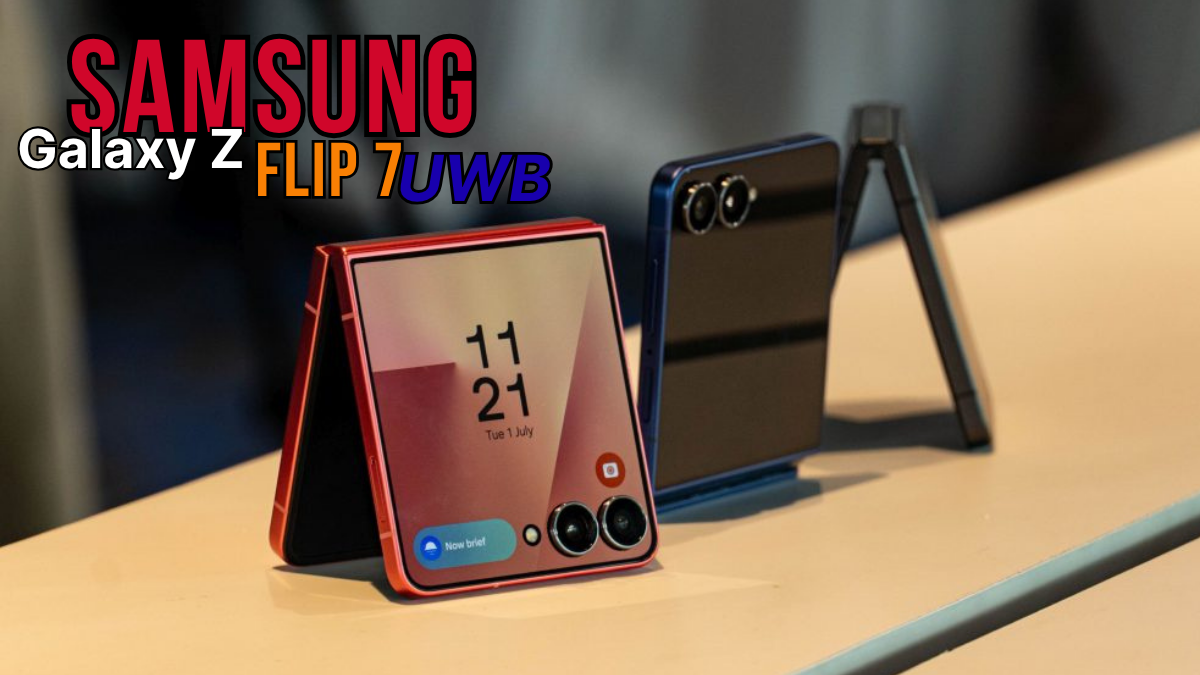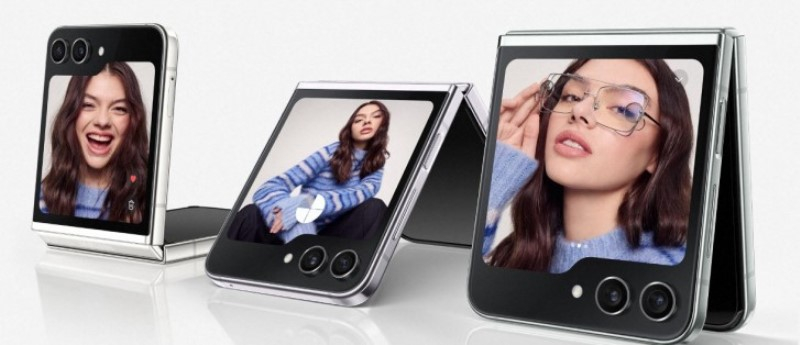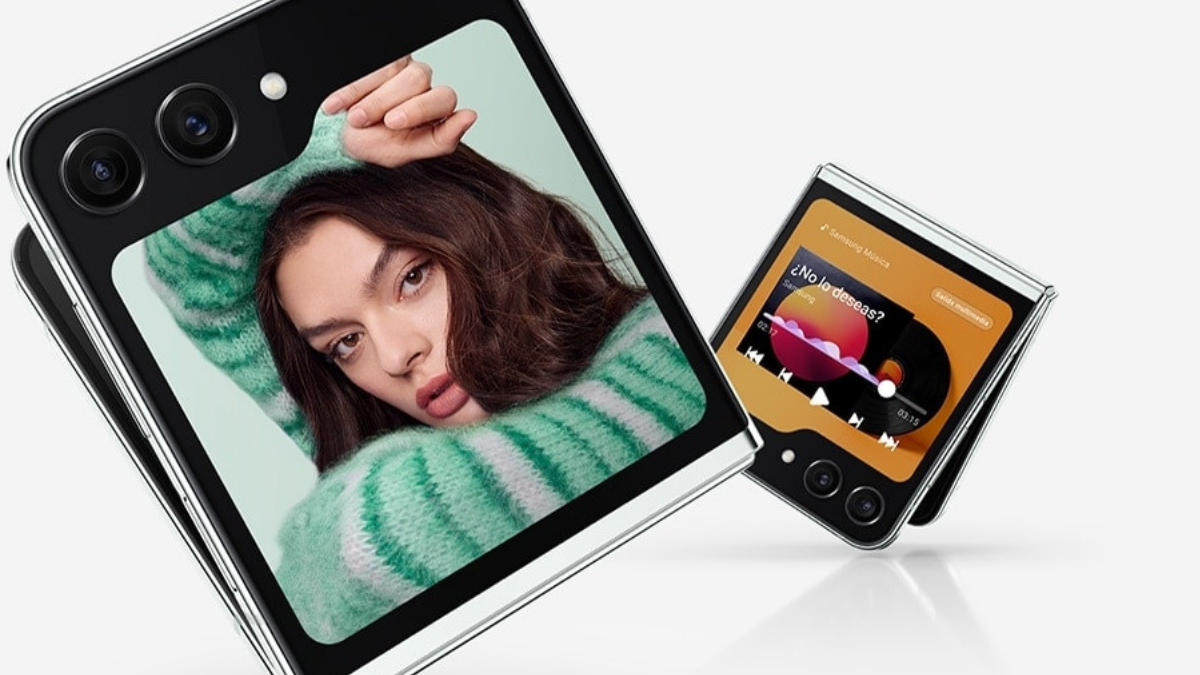Samsung has finally equipped the Galaxy Z Flip 7 with ultra-wideband (UWB) connectivity, marking a significant milestone for the foldable series. After years of limiting this precision tracking technology to its Galaxy S Plus, Ultra, and Z Fold models, Samsung is expanding UWB to its compact flip phone. However, there’s an important limitation that potential buyers need to know about.

The Galaxy Z Flip 7 represents the first device in Samsung’s flip phone lineup to support UWB technology. This wireless communication standard enables centimeter-level accuracy for location tracking, making it invaluable for features like digital car keys, precise item tracking, and enhanced Find My Device functionality. But Samsung has made an unusual decision about where this feature will be available.
UWB Limited to South Korean Models Only
The most surprising aspect of the Galaxy Z Flip 7’s UWB implementation is its regional exclusivity. Only the South Korean variant of the device (model number SM-F766N) includes ultra-wideband support. Users in the United States, Europe, and other global markets will receive Galaxy Z Flip 7 units without this connectivity option.
Samsung’s official specification sheet for the Korean market explicitly lists UWB as a supported technology. This has been confirmed through multiple sources, including the Google Play Console’s device catalog, which tracks UWB-compatible devices for app developers. Testing on Korean units through Samsung’s Remote Test Lab also reveals the characteristic “Ultra-wideband (UWB)” toggle found in the Settings menu of other Samsung phones with this technology.
What UWB Brings to the Table
Ultra-wideband technology offers several practical advantages over traditional Bluetooth or Wi-Fi-based tracking methods. The technology excels at highly precise location detection, providing accuracy down to the centimeter level. This precision makes UWB particularly valuable for several key applications.
Digital car keys benefit enormously from UWB’s accuracy. The technology allows your phone to detect your approach to your vehicle and automatically unlock doors without requiring you to remove the device from your pocket or bag. Google’s Find Hub also leverages UWB to pinpoint the exact location of compatible item trackers, eliminating the frustration of searching for lost belongings.
Samsung’s ecosystem includes several UWB-compatible devices that Korean Galaxy Z Flip 7 users can now track with enhanced precision. The Galaxy SmartTag+ and Galaxy SmartTag 2 both support ultra-wideband connectivity through Samsung’s SmartThings app, enabling users to locate these trackers with remarkable accuracy.
The Mystery Behind Regional Restrictions
Samsung hasn’t provided an official explanation for limiting UWB to the Korean Galaxy Z Flip 7 model. Industry observers have proposed several potential reasons for this unusual decision.
Regional demand might play a significant role. Ultra-wideband technology may have achieved greater adoption and popularity in South Korea compared to other markets. If Korean consumers specifically request UWB functionality when choosing smartphones, Samsung might feel compelled to include it to remain competitive with other brands.
Regulatory certification costs present another possible explanation. Each country where Samsung sells the Galaxy Z Flip 7 requires separate approval processes for wireless technologies like UWB. The costs and complexity of obtaining these certifications across dozens of markets might have influenced Samsung’s decision to limit UWB to its home market initially.
Manufacturing considerations could also factor into the equation. It remains unclear whether global Galaxy Z Flip 7 units contain the UWB hardware that’s simply disabled through software, or if Samsung is manufacturing different hardware configurations for different regions. A detailed teardown analysis will be needed to determine the exact implementation approach.

Samsung’s UWB Journey
Samsung’s relationship with ultra-wideband technology began in 2021 with the Galaxy S21 series. The Galaxy S21+ and Galaxy S21 Ultra were the company’s first smartphones to include UWB support, alongside the launch of the Galaxy SmartTag+ tracker. This marked Samsung’s entry into the precision tracking market that Apple had pioneered with its AirTags and U1 chip.
Since 2021, Samsung has systematically expanded UWB support across its flagship lineup. The Galaxy S series Plus and Ultra models consistently include the technology, as do all Galaxy Z Fold devices. The Galaxy Z Flip series remained the notable exception until now, likely due to space constraints within the compact form factor.
According to Google’s device compatibility data, fewer than 90 smartphone models currently support UWB technology. Samsung accounts for more than half of these devices, demonstrating the company’s commitment to ultra-wideband adoption despite its selective implementation approach.
Alternatives for Global Users
Consumers outside South Korea who want Samsung smartphones with UWB support have several alternatives. The Galaxy S25+ and Galaxy S25 Ultra both include ultra-wideband connectivity across all markets. The new Galaxy Z Fold 7 also maintains UWB support globally, continuing Samsung’s tradition of including premium features in its larger foldable device.
These alternatives come with trade-offs compared to the Galaxy Z Flip 7’s unique form factor. The Galaxy S25 series offers traditional candy bar smartphone designs, while the Galaxy Z Fold 7 provides a much larger unfolded screen experience. Neither option replicates the compact, pocketable appeal of the flip phone design that attracts many Galaxy Z Flip users.
Future Outlook for UWB Expansion
The Galaxy Z Flip 7’s regional UWB implementation raises questions about Samsung’s long-term strategy for the technology. Will future Galaxy Z Flip models include UWB support globally, or will Samsung continue to limit the feature based on regional considerations?
Industry trends suggest that UWB adoption will continue growing as more manufacturers recognize its value for precision tracking applications. Apple’s continued investment in ultra-wideband across its iPhone lineup demonstrates the technology’s importance for premium smartphone experiences.
Samsung’s decision to include UWB in the Korean Galaxy Z Flip 7 indicates that the company has solved any technical challenges related to integrating the technology into the compact flip phone form factor. This suggests that global expansion of UWB support in future Z Flip models is technically feasible.
The Broader Impact on Foldable Innovation
The Galaxy Z Flip 7’s selective UWB implementation highlights the complex decisions manufacturers face when developing foldable smartphones. Balancing premium features, manufacturing costs, and regional market demands becomes increasingly challenging as foldable devices mature and compete more directly with traditional flagship smartphones.
For consumers, this development demonstrates the importance of researching regional specifications when considering Samsung devices. Features that seem standard across a product line may actually vary significantly based on geographic location and local market conditions.
Making the Right Choice for Your Needs
The Galaxy Z Flip 7’s UWB limitation shouldn’t necessarily disqualify the device for global consumers. Ultra-wideband represents just one feature among many that define the smartphone experience. The Galaxy Z Flip 7 offers numerous other premium capabilities, including flagship-level performance, advanced camera systems, and the unique benefits of its foldable design.

However, users who prioritize precision tracking for digital car keys, item trackers, or other UWB-dependent applications should consider the Galaxy S25+ or Galaxy Z Fold 7 as alternatives that provide this functionality globally.
Samsung’s approach to UWB in the Galaxy Z Flip 7 reflects the ongoing evolution of foldable smartphones and the complex market dynamics that influence feature availability. As the technology continues developing, we can expect more consistent global implementations of premium features like ultra-wideband connectivity.
FAQs About Samsung Galaxy Flip 7 UWB Version
Q: What is UWB connectivity?
A: Ultra-wideband (UWB) connectivity is a short-range wireless communication protocol that enables precise location tracking and data exchange. It is commonly used in features like digital car keys, device tracking, and file sharing.
Q: Why is UWB connectivity only available in South Korea for the Galaxy Z Flip 7?
A: Samsung has limited UWB connectivity to South Korean models of the Galaxy Z Flip 7 due to market-specific considerations, which may include regulatory approvals, demand, or infrastructure readiness in different regions.
Q: Can I enable UWB on a Galaxy Z Flip 7 model from another region?
A: No, UWB hardware and corresponding features are not included in models sold outside of South Korea, meaning it cannot be enabled through software updates or other methods.
Q: How does UWB improve user experience?
A: UWB allows for precise location tracking and fast device pairing, enhancing functionality for applications like SmartThings Find, digital keys, or seamless file transfer between compatible devices.
Q: Will UWB connectivity be included in future global Galaxy Z Flip models?
A: Samsung has not made an official announcement about global UWB availability for future models. However, as technology adoption expands, it is possible that UWB will become more widely available.
For More Information Click Here